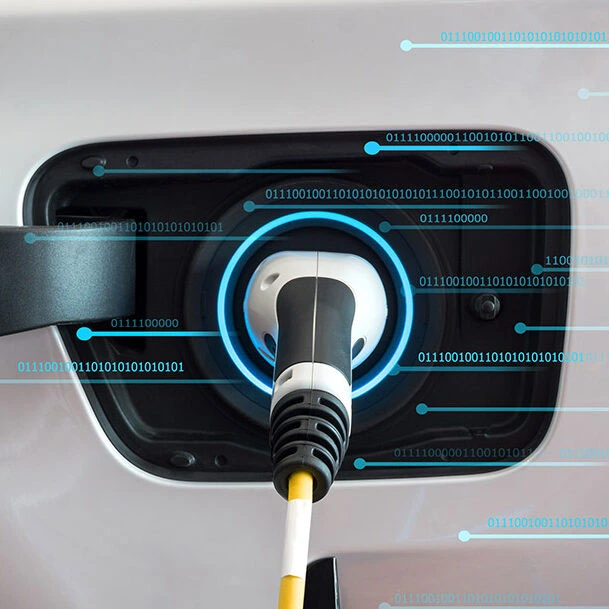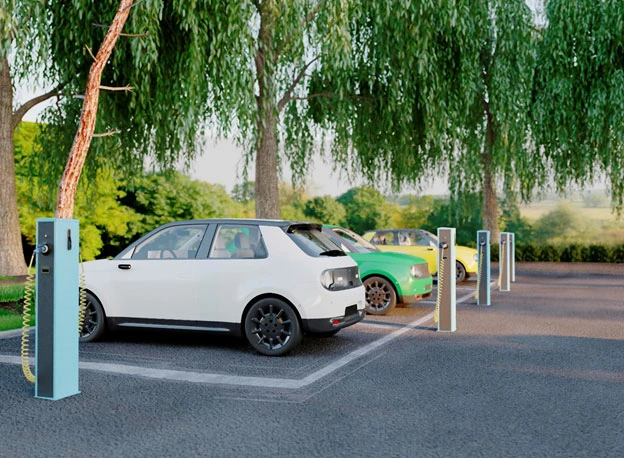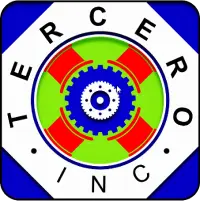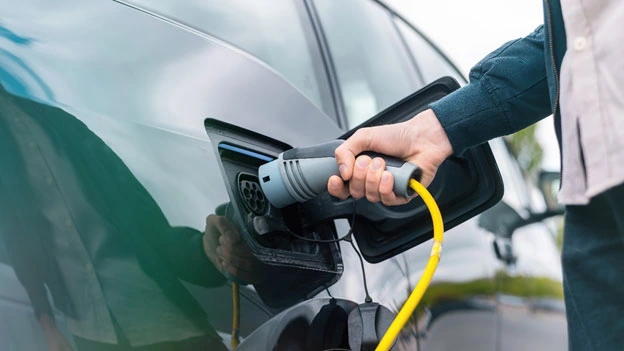Summary
If your EV charger is not working as expected, it could be a software or hardware problem. Regardless of what the problem is, any issue with your charger is a safety concern and should be treated by a certified technician. If you need professional EV charger repair services in Los Angeles, call Tercero Inc. now.
Table of Contents
As the number of electric vehicles on Los Angeles’ highways increases, so does the need for dependable EV charging infrastructure. However, as with any technology, EV chargers can malfunction or fail, leaving EV users stranded and requiring expert EV charger repair.
Understanding typical issues with EV chargers and knowing when to call for repairs is critical to maintaining safe and continuous charging. In this post, we will look at the most typical issues with EV chargers in Los Angeles, such as error codes, slow charging, connectivity issues, and when to seek professional assistance to get your charger back up and running properly.
Let’s begin.
Introduction: Importance of Timely EV Charger Repair
The fast adoption of electric vehicles has resulted in an increase in the number of charging stations. While this is a wonderful development, it highlights the importance of maintenance and repair. EV charging stations must be constantly monitored and maintained to operate at peak efficiency.
EV owners can become stranded in the worst ways without timely charger repair to address issues before they escalate. Additionally, by scheduling timely and regular maintenance, you can improve efficiency, reduce the chance of problems, and increase the lifespan of your EV charger.
Common Problems with EV Chargers
Providing a seamless and practical charging experience is critical for electric vehicle owners. However, EV chargers are prone to various difficulties, among which are:
1. Charger Not Powering On
A charger that does not turn on can be inconvenient, especially if you’re in a hurry. If your charger isn’t working, it could be due to a power supply issue, a damaged cable or connector, a faulty circuit breaker, a software error, or a hardware failure.
To fix it, ensure the power outlet works and the charger is attached correctly. You should also check the cable and circuit breaker for evidence of damage.
2. Slow Charging or Reduced Charging Speed
It typically takes 30-40 minutes to charge an EV battery completely. While that is regarded as excessively long, any issue with your EV charger will dramatically reduce charging speed, resulting in an even less enjoyable experience.
Slow charging speeds can be caused by malfunctioning chargers, wrong charge settings, broken cords, software errors, compatibility issues, overheating, and connectivity issues. Regardless of the nature of the problem, you must have it checked out by a competent EV specialist immediately.
3. Charger Error Codes

Responding quickly to charger error codes can help avoid future problems and guarantee safe charging. While error codes might differ by manufacturer and model, some frequent error code issues are:
- High battery voltage error
- Low battery voltage mistake
- Charge timeout.
- Overheat Protection
- Incompatible EV model.
- Power supply difficulties.
- Communication error.
4. Connector Issues
The connector is the interface between an electric car and a charging station or wall box. This component facilitates the transfer of electrical energy from the charger to the vehicle’s battery. If the connector is faulty, you may notice delayed charging, intermittent charging, failed charging attempts, burn marks, or error codes on the screen.
Corrosion, wear and tear, bent wires, overheating, poor installation, and incompatibility are all potential reasons for connector troubles. As this is a crucial component needed for charging, damage will cause frustration and customer loss.
5. Overheating Chargers
Overheating is a common EV charging problem. Its symptoms include slow charging, unusual odors or smoke, error codes, intermittent charging, and more. If you suspect your charger is overheating, it is usually the result of poor maintenance, manufacturer defects, poor ventilation, faulty cooling systems, incorrect installation, and more.
6. Compatibility Problems with Electric Car Charger for Office
Compatibility issues with EV chargers can include the type of plug, power requirements, and app that the owner uses. When these factors don’t align with the charging infrastructure, they can prevent access to charging facilities or lead to charging failure. Compatibility issues can be resolved by adopting standard charging protocols and regularly updating software and firmware.
Signs You Need Professional EV Charger Repair
Your electric charger should start working when you plug it in. If that doesn’t happen, the best option is to call for an electrician. Never try fixing an EV charger yourself; it is complex and dangerous. Some signs that you need a professional repair are:
- The fan isn’t working: High temperatures cause damage, so an EV charger has a fan that dissipates the heat and ensures proper ventilation.
- External damage: If you notice any visible damage to your EV charger, it is recommended that you have it checked out, as it can affect the charging system.
- Low voltage levels: A typical level 2 charger operates at 240 volts, which is suitable for that level of charging. If that voltage decreases, it may impact charging time and must be checked out by a professional.
Benefits of Professional EV Charger Repair Services in Los Angeles
The following are reasons why you should hire a professional repair service in Los Angeles:
1. Expertise in Local Electrical Codes
A competent EV charger electrician should know local electrical standards and regulations. Familiarity with local electrical infrastructure and grid capacity will ensure that all repairs and installations meet the relevant standards and safety rules.
2. Avoiding Safety Hazards
Professionals guarantee that repairs satisfy applicable safety standards, protecting users and preventing future harm. This includes ensuring adequate grounding and bonding, minimizing overload, checking charger compatibility, and recognizing potential faults.
3. Prolonging Charger Lifespan
Well-maintained chargers lessen the likelihood of malfunctions and downtime. Regular maintenance also allows you to catch concerns before they become serious problems.
How to Choose the Right EV Charger Repair Service in Los Angeles
When searching for an EV repair specialist, prioritize the following:
1. Look for Certified Technicians
Choosing qualified experts ensures that your EV charger is in capable hands. Some credentials to seek include the Electric Vehicle Infrastructure Training Program (EVITP). You should also look for certificates from manufacturers such as Tesla, ChargePoint, and the Los Angeles Department of Water and Power (LADWP).
2. Experience with Both Residential and Commercial Chargers
Another tip for selecting the proper EV charger provider is to look into their experience with electric vehicle charger repair for home and workplace stations. They should also be familiar with different connectors (e.g. CCS1, NACS).
3. Read Customer Reviews
Before making your final decision, examine customer reviews and opinions on third-party websites.
Maintenance Tips to Prevent Future EV Charger Issues
EV charger maintenance involves several tasks to ensure proper functioning, safety, and user satisfaction. Some tips for avoiding future EV charging issues are:
1. Regular inspections
Visually inspect your charger for signs of damage, exposed wires, loose connection, and wear and tear.
2. Cleaning
Keep the charger free of dust, dirt, debris, and other substances that can affect its performance.
3. Software updates
Ensure you regularly update the charger software to maintain optimal performance, compatibility, and safety.
4. Testing and calibration
Conduct routine testing to verify compatibility, connectivity, and charging speeds. Calibrate the equipment as needed.
5. Component checks
Inspect critical components like connectors, display screens, cables, and payment systems to ensure proper operation.
6. Networking
Check the charger’s network to ensure a stable and consistent connection to the charging station.
When to Upgrade Instead of Repairing Your EV Charger

While repairing your EV charger is the go-to method for fixing charging issues, there are circumstances where it is better to upgrade the charger instead, especially in cases of:
1. Outdated Chargers
If your charger is several years old and nearing the end of its lifespan, it will start having numerous problems. At this stage, upgrading to a newer model is better to ensure you have a reliable and efficient charger.
2. Chargers That Can’t Keep Up with Demand
If your charger can’t keep up with your charging needs, upgrading to a newer model will ensure you can accommodate your latest requirements.
3. Cost Considerations
Upgrading may be a more cost-effective option if repairs are approaching or are beyond the cost of a new charger.
Conclusion: Prioritize Timely EV Charger Repairs in Los Angeles
Maintaining the effectiveness and safety of your charging infrastructure requires routine EV charger repair. While you might be inclined to handle the malfunctioning charger yourself or put it off, minor difficulties can occasionally become more extensive and costly. Additionally, there is a chance of hazardous outcomes, including fire dangers and electrocution due to malfunctioning parts. By working with the best EV charger repair company in Los Angeles, you can avoid these problems. For prompt repairs, get in touch with Tercero Inc. today.
FAQs
There are many reasons EV chargers fail. Some might be connectivity, software, overheating, part failure, or compatibility issues.
Yes. You should schedule regular maintenance and checks to ensure efficiency and safety.
Your EV charger’s maintenance checklist includes cleaning, component checks, software updates, regular inspections, and testing and calibration.
Your charger should be replaced when it no longer meets your needs, becomes outdated, or becomes more expensive to maintain than replace.
Some common EV charger problems are slow charging speeds, error codes, connector problems, overheating, and compatibility issues.

